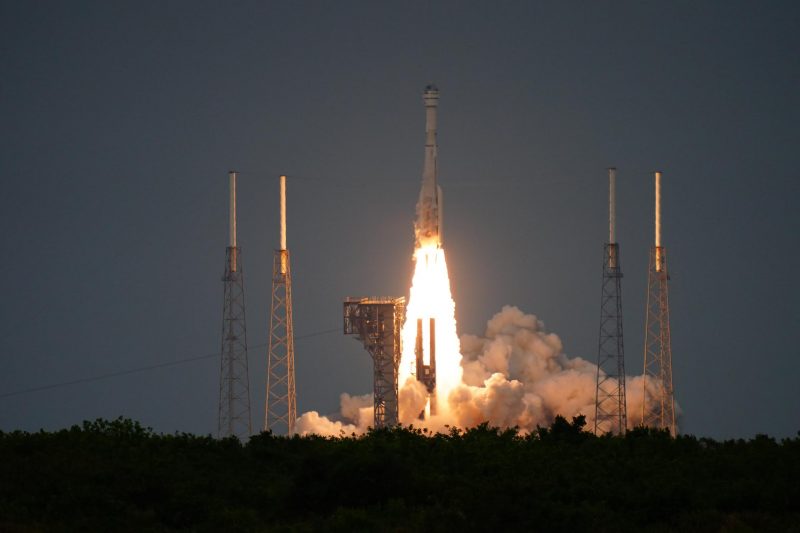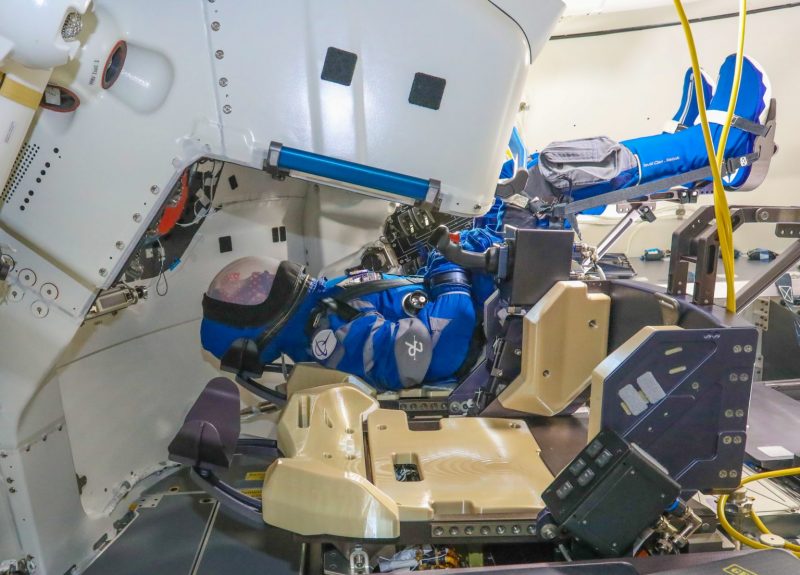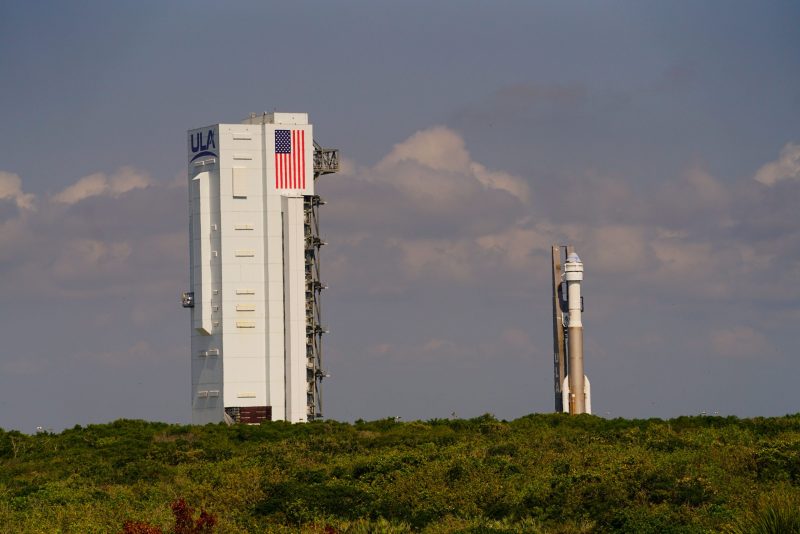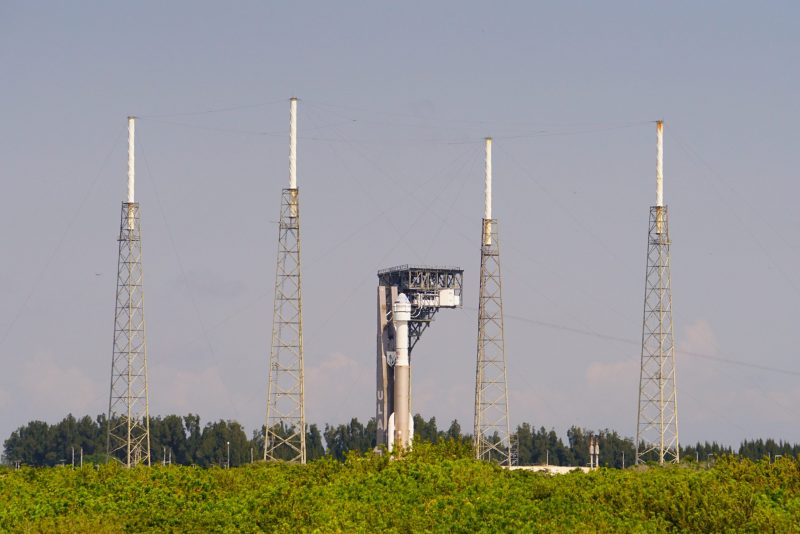NIGHT SKY ALERT! Will the Tau Herculids produce a meteor storm on May 30-31?
Third try does it for Starliner
Boeing’s Starliner crew capsule is back on Earth following a successful unmanned mission to the International Space Station. The capsule came to rest on Wednesday (May 25, 2022) at the White Sands Space Harbor in New Mexico.
Unlike space capsules from the Apollo era, Boeing’s craft touches down on land rather than making a splashdown at sea. NASA’s announcement of the completed Orbital Flight Test-2 (OFT-2) described Starliner’s graceful arrival this way:
Starliner settled gently onto its airbags following a parachute-assisted landing that helps set the stage for future crewed landings. The landing followed a deorbit burn at 6:05 p.m., separation of the spacecraft’s service module, and successful deployment of its three main parachutes and six airbags.
The touchdown marks a happy ending to a troubled first mission for Starliner, which failed to reach the ISS on its first attempt, then had a second go delayed due to a set of faulty valves. The spacecraft experienced a similar failure on this launch, overcoming the loss of two thrusters on its journey to orbit.
A quick trip home
When Starliner got back on the ground at 6:49 p.m. MT on Wednesday, it had been just 44 minutes since the craft had departed the Harmony module on the ISS. The spaceship’s roundtrip to orbit and back lasted seven days. Mission Control planned a minimum of five days on orbit while the craft’s cargo was unloaded and the fledgling capsule was put through its paces.
Starship launched from Space Launch Complex 41 on Thursday, May 19, 2022, atop an Atlas V booster, then arrived at the ISS the following evening in a successful test of the spaceship’s automated docking system.
Boeing’s Starliner gives NASA options
The Starliner reusable space capsule made this initial test without a live human crew, a critical step in proving the craft is safe for human use, and making it a high-stakes flight for Boeing. This mission – called the OFT-2 mission – marks Starliner’s entry into NASA’s growing stable of available crew capsules.
During NASA’s post-launch press conference Thursday evening, NASA revealed a failure of two out of three orbital maneuvering attitude control (OMAC) thrusters in one of Starliner’s four rear-facing doghouses. The first OMAC thruster failed after a 1-second burn. When the onboard computer switched to a second thruster, it too failed after 25 seconds.

On its website, Boeing describes Starliner like this:
Boeing’s Crew Space Transportation (CST)-100 Starliner spacecraft is being developed in collaboration with NASA’s Commercial Crew Program. The Starliner was designed to accommodate seven passengers, or a mix of crew and cargo, for missions to low-Earth orbit. For NASA service missions to the International Space Station, it will carry up to four NASA-sponsored crew members and time-critical scientific research. The Starliner has an innovative, weldless structure and is reusable up to 10 times with a six-month turnaround time. It also features wireless internet and tablet technology for crew interfaces.

Some hiccups on the road to success
The May 19 launch was Starliner’s third attempt to reach the International Space Station. The first attempt, OFT-1, failed when the onboard Mission Elapsed Time (MET) clock malfunctioned, causing a bad burn and a failure to make the correct orbital insertion for docking with the ISS.
Boeing engineers thought they were ready for another try in August of last year. That attempt never left the ground, as preflight testing revealed a set of stuck propulsion valves.
Boeing has spent around $595 million (€567 million) from its own pockets to correct Starliner’s problems, leaving the company facing a shrinking profit margin. Development of Starliner was funded by a $6 billion (€5.6 billion) award to Boeing from NASA’s Commercial Crew Program.
During the May 19 launch, the only hiccup was a slight overboost by the main Atlas lift vehicle, which commentators noted as a good thing, a sign of the craft’s hardiness and reliability. The overboost came at around the T-plus 8 minute mark. Main engine cutoff (MECO) was scheduled for T-plus 12 minutes, but was advanced to around 11 minutes 50 seconds to allow the second-stage Centaur to compensate for the overenthusiam of the Atlas.
Photographer Greg Diesel Walck covered the launch for EarthSky.


Bottom line: Boeing’s Starliner returned safely from the International Space Station on Wednesday, May 25, 2022. It’s touchdown marks a successful end to the OFT-2 mission.











